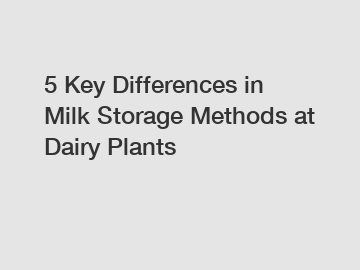The Refrigeration Cycle - In easy to understand ...
The Refrigeration Cycle - In easy to understand ...
The Refrigeration Cycle is a simple but amazingly clever and useful process.
In its simplest form, the refrigeration cycle consists of just 4 basic components to complete the circuit:
Check now
That’s it. Well, that’s almost it – we also need a refrigerant to cycle inside the circuit. As the name suggests, the refrigeration process is a cycle. The Compressor can be thought of as the heart of the process. The Condenser cools and condenses the refrigerant gas coming from the compressor in to a vapour and finally in to a liquid. The restriction restricts the liquid refrigerant flow coming from the condenser, and creates a pressure difference between itself and the evaporator. The restriction is more commonly referred to as a METERING DEVICE as it meters the amount of refrigerant entering the evaporator. The Evaporator evaporates the liquid refrigerant in to a vapour and then in to a gas before it gets back to the compressor. You may have noticed that in this very brief and simplified introduction to the components, that we have already talked about the refrigerant being a GAS, a VAPOUR and a LIQUID. It is this changing of state within the refrigerant that produces the refrigeration effect, and is the main principle of the refrigeration cycle – more on this a bit later. The Compressor is the heart of the refrigeration cycle and comes in a vast array of sizes. The condenser is often referred to as the ‘outdoor unit’, and that’s usually where you will find it – outdoors, mounted on the floor, wall or roof. In most air conditioning and smaller refrigeration plants, the outdoor unit will house the compressor, condenser, various electronics and in some cases, the restriction (metering device) too. In larger systems the condenser will be a stand alone unit with multiple fans to draw air over the cooling coil. The vast majority of all modern refrigeration & air conditioning systems will use one of these 3 types of metering device. Capillary tubes are simply a length of very narrow tube that causes a restriction to the flow of refrigerant. Thermostatic Expansion Valves, more commonly termed TEV’s or TXV’s, are very common throughout all refrigeration systems. They use a metal bulb which is partially filled with refrigerant and is strapped to pipe work exiting the evaporator. This bulb matches the temperature of the refrigerant leaving the evaporator, and through pressure can open and close to vary the amount of refrigerant entering the evaporator. Electronic Expansion Valves, more commonly termed EEV’s or EXV’s, are a more modern and accurate version of a TEV. They are electronically controlled through data provided by an electronic pressure sensor on the pipe work, and can open and close multiple times every second to allow very precise control of the amount of refrigerant entering the evaporator. Being electronic, the data they provide can be examined by refrigeration engineers through software. To help understand the job of the Restriction or Metering Device, it can be loosely compared to the nozzle on an aerosol spray can. The Evaporator is often referred to as the ‘indoor unit’, and that’s usually where you will find it – indoors inside the room being cooled (or heated in the case of heat pump air conditioning). They are usually mounted at high level on a ceiling or wall. The Evaporator & Condenser coils are basically the same type of construction. There are many types of refrigerants and refrigerant blends. Different refrigerants have different properties to suit the application – Air Conditioning, Cold Rooms, Freezers etc. The term refrigeration means cooling a space, substance or system to lower and/or maintain its temperature below the ambient one (while the removed heat is rejected at a higher temperature). In other words, refrigeration is artificial (human-made) cooling. Something that you perceive as ‘Cold’ is lacking ‘Heat’. One very important aspect to grasp when understanding the refrigeration cycle is that heat is relative. We tend to think of heat in terms relative to our everyday experiences and situations. But when we look at those temperatures in relation to other temperatures, the reality is very different. If we look at the temperature of the surface of the sun at 5,500°C (9932°F), our 30°C (86°F)HOT day, in relation, is positively chilly. And likewise, liquid nitrogen at -200°C (-328°F), makes our FREEZING COLD 16°C (61°F) sea seem BOILING HOT! When we think of the term ‘BOILING’ we instantly think of water in a kettle boiling at 100°C (212°F). We instinctively associate boiling as being 100°C (212°F). But it is important to understand that this only happens with water, at sea level, where the atmospheric pressure is at 1 bar. If we were at the top of mount Everest, where the pressure is only 0.34 bar, our water would ‘boil’ at 71°C (160°F). The effect of reducing the pressure to reduce the boiling temperature of water is brilliantly demonstrated by boiling water at room temperature by placing the water in a vacuum: From this it is important to forget your connection of boiling = 100°C (212°F) and think of boiling as being a CHANGE OF STATE from a liquid to a gas. Some refrigerants can ‘boil’ at -40°C (-40°F). This relationship between PRESSURE & TEMPERATURE is a key factor in the refrigeration cycle process. The changing of state within the refrigerant, from a liquid to a gas, is achieved by manipulating its pressure. If we return to the refrigeration cycle with the aid of some diagrams, we can see how these pressure changes causing changes of state within the refrigerant actually happen. Superheat is important to ensure no liquid makes its way back to the compressor. Although we described the compressor as ‘acting’ like a pump earlier, it isn’t a pump. Pumps usually move liquids by way of an impeller, where as compressors, as the name suggests, compress the volume of the gas which raises both its temperature & pressure. Liquid’s can’t be compressed, and any liquid making its way back to the compressor can cause serious damage. Subcooling is important as it ensures only pure liquid makes its way to the metering device. This maximises the capacity, efficiency and reliability of the system. If you’ve made it this far, you probably now have a good understanding of the refrigeration cycle, and we’d love to hear your comments below – Thanks for reading!
We start at the compressor, go through the condenser, then through the restriction, then through the evaporator and finally back to the compressor where the cycle starts all over again.So let’s have a brief look at each of the components in turn. Luckily, their names are quite self explanatory:
1. The Compressor.
It acts like a pump to create the circulation by compressing the refrigerant gas, creating a pressure difference that drives the refrigerant around the circuit in a continuous cycle.2. The Condenser.
3. The Restriction.
4. The Evaporator.
5. The Refrigerant.
Here are some examples of these components and what they look like:
1. The Compressor.
In smaller systems it is usually found inside the outdoor unit, next to the condenser. But in large applications of multiple compressors, like in supermarkets, they are usually found separate inside a covered plant room.2. The Condenser.
3. The Restriction (Metering Device).
A capillary tube metering device.
A thermostatic metering device.
An electronic metering device.
They are most commonly found on small refrigerators like you have in your home.4. The Evaporator.
A long length of pipe work surrounded by aluminium fins.
They are essentially heat exchangers, similar to the radiator in a car.5. The Refrigerant.
Refrigerants are usually referred to by an ‘R’ number, for example R32, R410A, R422D, R507.
Propane (R290), Ammonia (R717), and CO² (R744) are also currently used as refrigerants.Before we go any further, it’s important to understand what refrigeration actually is:
The important part of this definition is the ‘removed heat ‘.
The job of a refrigeration system is simply to remove heat from where it’s not wanted.Heat is relative – what do you consider hot?
At 30°C (86°F) we think of it as being a BOILING HOT day! (At least we do here in England!)
When we take a dip in the 16°C (61°F) sea on that hot day it feels FREEZING COLD!
So with a difference of just 14°C (25°F), our perception of heat has gone from BOILING to FREEZING!
Under high pressure the refrigerant remains in its liquid state, and when the pressure is reduced the liquid refrigerant begins to ‘boil’ and change in to a vapour or gas.The Refrigeration Cycle – Components:
Here we can see the 4 basic components in the circuit.
The Refrigeration Cycle – Flow Direction:
Shows the direction of flow of the refrigerant – Starting at the Compressor in a clockwise direction.
The Refrigeration Cycle – Transfer of Heat:
Shows the transfer of heat energy. Heat is absorbed by the evaporator and rejected by the condenser.
The heat removed from the air flowing over the evaporator makes it colder. The evaporator fan then blows this colder air back in to the space being cooled.
The heat removed is then rejected by the condenser which is outside of the space being cooled, and usually physically outside in the open air. The fan blows ambient air over the hot condensing coils. This cools and condenses the refrigerant but heats up the air blown over the condenser. That’s why when you stand in front of a condenser it’s usually blowing hot air at you.
The Refrigeration Cycle – Pressures:
By dividing the system vertically as above, we can see that at all points to the left of the line – the refrigerant is at low pressure, and at all points to the right of the line – the refrigerant is at high pressure.
The Refrigeration Cycle – Refrigerant State:
By dividing the system horizontally as above, we can see that at all points above the line – the refrigerant is a gas, and at all points below the line – the refrigerant is a liquid.
In the middle of both the condenser & evaporator, where the change of state of the refrigerant happens, the refrigerant is present in both liquid & gaseous states, and is referred to as a vapour.
The Refrigeration Cycle – Complete:
In this final diagram of the refrigeration cycle we have introduced 3 new terms: Superheated, Saturated & Subcooled.
So, looking back at our completed refrigeration cycle diagram, let’s describe the process in full:
And there it is. THE REFRIGERATION CYCLE in its most basic and understandable terms!
Air- versus water-cooled chilled water plants
Revolutionizing the HVAC industry with water cooled chillers: Can traditional chillers keep up?
How do you select a Surface Treatment Industrial Water Chiller?
Maximizing Efficiency: The Benefits of Using Aircon Chiller System
Exploring the Efficiency of Auto Switch Water-Cooled Chiller
4 Advice to Choose a Water Air Chiller
Key Questions to Ask When Ordering Chiller Air Cond System: A Comprehensive Guide
Everything You Need to Know About Micro Refrigeration ...
A micro refrigeration system is usually used in most vehicles’ engines, printing machine motors, and other equipment to cool down the equipment. It balances the overheating caused by the heavy work. This brief and simple article will cover everything about a micro refrigeration system that you should know.
Micro refrigeration system became very popular as people wanted small-scale cooling systems for their equipment. It makes the work easier and simpler. Also, a large-scale refrigeration system can cost very much. For that, there is a growing need for such micro refrigeration system lately.
Overheating causes lower production and operational efficiency for machines and engines. Such as printing machines and engines produces a large amount of heat during the working process. If the equipment overheats, it can cause harm to the devices and also diminish the quality of the work.
For that having a cooling unit is necessary for such works. And what is better than a micro refrigeration system? You can operate it efficiently and move comfortably, and it is an economical choice.
When you buy or decide on a micro refrigeration system, you should have a proper understating of what it is and its working mechanism. So, let’s find out.
What is Micro Refrigeration System?
A micro refrigeration system is ultimately a cooling unit. People apply it to various equipment to keep them from overheating. It contains water inputs and outputs, water systems, lakes, motors, and pipelines, and it feeds liquid to the condenser.
The micro refrigeration system absorbs heat from the flowing water and cools it. Then, the pump circulates the cool water via the refrigerating system vest and continually flows around the equipment, keeping the engine at a safe temperature. It is capable of operating at temperatures as low as °C.
The Micro refrigeration system is appropriate for healthcare refrigeration, beautification appliance cooling, and other vapor cooling technology. It employs a tiny dc inverter compressor with a changeable cooling load at various speeds. As an evaporator, it uses a coaxial heating element.
A micro refrigeration system usually features quick cooling with stable thermal management. It has BLDC Compressor with a driver board and micro Rotating Refrigeration Compressors. It can be powered by a battery, a car, the grid, or solar energy at varying speeds.
Micro refrigeration system began a new wave in the small portable cooling system that offers a high cooling capacity. But for that, it has to work correctly. Let’s look at its working process and how it operates.
How does Micro Refrigeration System work?
A typical refrigeration cooling mechanism will contain mechanical parts that allow it to attain and sustain cold conditions easily. They are the elements that will keep the refrigeration cycle running. To get the necessary results, these components are highly specialized.
The cycle entails the transportation of refrigerant from one location to another and, in many ways, to lower temperatures in an engine, machine, or even cold storage arrangement. The most important reason for knowing how your micro cooling system works is so that you can successfully maintain and repair the device.
Knowing that your refrigerator employs an air-cooled condenser will assist you in locating the best location for the cooling system. It will improve the cooling capacity and minimize its energy usage. Only by knowing the fundamentals will one be able to profit from their micro refrigeration system ultimately.
The Refrigeration Cycle Working Mechanism
A conventional refrigeration cycle comprises four primary parts: a compressor, a condenser, an expansion valve, and an evaporator. Furthermore, the refrigeration must employ a refrigerant, a material applied to provide the cold temperature.
The refrigerant must flow through all of these elements and be adjusted to attain the desired conditions. Refrigerant fluid passes through the cooling system, which will be transformed into liquid and gaseous states periodically.
The compressor is in charge of compressing overheated vapor from minimum to maximum pressure. Following that, the pump circulates the high-pressure, high-temperature refrigeration liquid towards the condenser.
The condensers are heat exchangers that function at high heat and temperatures greater than the ambient temperature. As a result, the condenser can expel heat from the refrigeration liquid into the atmosphere. The heat transfer mechanism decreases the total power of the refrigeration flow by converting it from the overheated vapor to subcooled water at the heat transfer outlet.
The refrigeration fluid normally passes through a filter drier in the fluid form, which is essential to eliminate the later existing moisture from the cooling system. The refrigerant then extends in the expansion valve as it exits the filter drier, causing a portion of the refrigerant to transition states.
The refrigerant undergoes conversion from water to air which causes a temperature drop in the liquid. An intermediary heat transfer is commonly used in refrigeration systems. These heat exchangers reduce the temperature in the evaporator while increasing the fluid heat in the compression suction hence avoiding issues like line overheating or fluid flow back into the compressor.
The refrigerant flow is in a two-phase form at evaporation pressure as it exits the expansion valve. The low-temperature refrigerant flow absorbs heat from the cold atmosphere via the evaporator. The evaporating stage is finished when the refrigerant absorbs heat from the cold atmosphere.
The excess fluid is typically turned into gas, which moves towards the compressor intake, where the cycle is repeated. Now using a micro refrigeration system functions the same on a small scale that you can use in various work.
Micro Refrigeration System Applications
A micro refrigeration system is a miniature cooling unit that is utilized as a small area cooler and many other little cooling purposes like laser cooling, electronics cooling, personal cooling system, water cooling system, medical equipment refrigeration, and a variety of other significant uses.
Direct expansion system from Aspen Direct expansion system from Coolingstyle Direct expansion system from CoolingstyleIt satisfies a particular client requirement where weight and area are crucial. Because of its reduced weight and tiny size, this cooling system, like standard air conditioners, is suitable as an outside or inside the device.
Its application includes purified water refrigeration and freezing, clinical and beauty solution cycling cooling. It is a lightweight and small portable cooling system, accuracy device, and laser beam cooling. There are many benefits of using micro refrigeration as a cooling system.
Micro Refrigeration System Benefits
The Micro Refrigeration System is a one-of-a-kind, small-footprint concept that offers various advantages over a more standard cooling system. It is adaptable enough to keep walk-ins, working areas, support functions, and containers cold. It can handle any applications throughout a whole shop.
These compact liquid chiller modules require minimal space and have a high cooling capacity for overheated pieces of equipment. The compact cooling system provides higher heat exchanges and good thermal efficiency.
They are ideal for reducing the heat from high heat flux components. It provides greater heat transfer efficiency, compactness, dependability, and adaptability in pricing.
Most high-tech compact cooling systems are projected to use micro refrigeration systems in proactive temperature control technology and appliances. Compared to conventional refrigeration systems like thermoelectric and Peltier refrigeration, these compact liquid chiller modules provide superior cooling efficiency.
The micro refrigeration system has specific cooling loads, effectiveness, and adaptability benefits and is relatively inexpensive. Micro compressor cooling systems are frequently employed in high thermal conductivity tools and techniques because of their high heat transfer rate, mainly when weight and area are important considerations.
As you can see, applying a micro refrigeration system for cooling equipment is an excellent idea with these many advantages. Some improved micro refrigeration systems are available such as vapor compression refrigeration systems, liquid chiller systems, etc.
Vapor Compression Refrigeration Systems
A vapor compression refrigeration system is a better form of liquid cooling system that uses an effective working ingredient known as refrigerant. It compresses and dissipates at temperatures and pressures near the atmosphere.
A vapor compression refrigeration system is commonly employed in programs that demand relatively high dependability over numerous years, such as those operating 24/7. The point is that these micro refrigeration systems are more dependable in ordinary circumstances as they are under reasonably hard usage.
The refrigerant utilized does not leave the system but is distributed throughout it, using a condenser and evaporator intermittently. The vapor compression refrigeration system functions as a passive heating system, extracting heat generated from the brine and delivering it to the chiller. It has many uses in different sectors.
Vapor Compression Refrigeration Applications
Simple and compact cooling systems are in high demand in several applications, notably clinical, defense, scientific, and electrical components. Cooling systems are frequently built into machinery for these uses to cool lasers, a patient’s body, circuitry, and materials, to mention a few.
With the introduction of the Micro Compressor in 2007, Aspen Devices entered a new phase of a comparatively tiny vapor compression refrigeration system. These compressor-based solutions are now preferred over other refrigeration technologies like air cooling, Peltier cooling, etc. because of their compact size, large cooling output, high heat transfer rate, reduced weight, low heat capabilities, and excellent efficiency.
The vapor compression refrigeration system outperforms the thermoelectric equivalents in efficiency and output. However, it is not well recognized that they are more dependable than traditional cooling systems in extreme conditions. Although more people and businesses are now interested in such portable refrigeration systems as they feature more benefits than conventional refrigeration systems.
Vapor Compression Refrigeration Benefits
In terms of benefits, the micro vapor compression refrigeration system has the same dependability as its thermoelectric equivalent while offering distinct advantages in terms of dimension, mass, output, thermal performance, and, most importantly, efficiency.
It is considerably smaller for the amount of cooling and has a lower operating cost. It can be used in a wide variety of temperatures. Furthermore, the cooling capacity to perform is pretty high.
Another micro refrigeration system that uses vapor compression is the liquid chiller system. They have the same benefits, if not more, and are a good compact cooling system option.
Liquid Chiller Systems
A liquid chiller is a form of a flexible temperature control module with a micro refrigeration system. It is the most extensively utilized chilling technology for fluid chilling, pure water cooling units, and small portable cooling systems.
It is operated by a miniature rotary compressor, one of numerous refrigeration cycle systems. It’s also found in laser coolers, scientific refrigeration systems, electronics cooling, small water cooling, glycol refrigeration systems, and large-scale vapor compression cooling systems.
Refrigeration is also described as reducing the temperature of a sealed environment or fluid temperature by extracting heat from the heat source and transporting it to another location.
Compact liquid chiller modules focus on designing and manufacturing small, micro refrigeration systems. It suits the demanding continuous high thermal conductivity requirements of the corporate, residential, industrial, and defense sectors.
Liquid Chiller Benefits
A liquid chiller system offers several distinct advantages as a dependable cooling method. The liquid chiller’s best characteristic is its small size and lightweight. It is compact and portable.
Liquid chiller offers small water chiller systems with excellent heat transfer efficiencies due to the increased thermal conductivity of the material and heat of the refrigerant fluid.
Compact liquid chiller modules are super small due to the usage of a brushless dc compressor. The small compressor distributes refrigerant to the condenser, which provides excellent heat exchange. The refrigerant allows heat transfers to be smaller while increasing thermal efficiency.
It is suited for chilling high heat flux components and in situations where a rugged and dependable liquid cooling system is required. The micro liquid chiller uses a small dc inverter compressor that can control compressor speed with a customizable heat load.
The liquid chiller provides excellent thermal performance to satisfy the needs of various clients. Rich expertise in the development and manufacturing of liquid chiller systems helps in the usage of the custom refrigeration system.
Conclusion
A micro refrigeration system can help you cool your overheated equipment without taking too much space. Furthermore, as they are small and portable, you can move with them comfortably. After reading our article, we hope that you will have a basic understanding of the micro refrigeration system and can choose the best one for you.
Are you interested in learning more about 30P refrigerating machine factory? Contact us today to secure an expert consultation!
4 Advice to Choose a A/C Chiller
What Are the Key Questions to Ask When Ordering Sea Water Industrial Chiller?
The Benefits of Using Chiller Ac for Home cooling
4 Practical Tips for Selecting a Freeze Protector Water Cooled Chiller
The Significance of Electroplating Rectifiers in the Copper ...
How to find China wholesale suppliers?
Organizing your fridge for maximum dairy freshness: tips?











